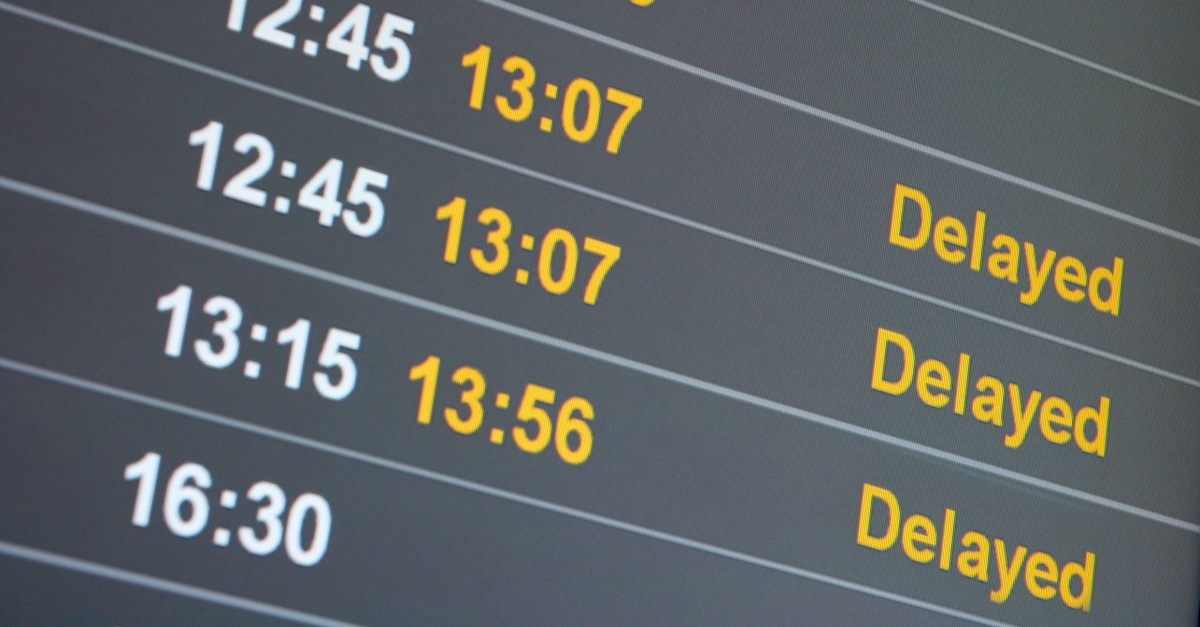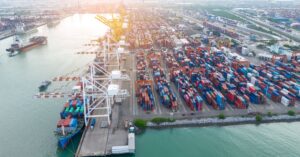Some say Heraclitus, a philosopher in ancient Greece, coined the phrase “expect the unexpected.” But chances are his “unexpected” was more in line with simpler times. Maybe it was a rock slide or a swarm of locusts. Just imagine if Heraclitus had been a freight broker and the unexpected event was a blocked canal or congested port or an interstate shut down by snow.
The unexpected, of course, has happened throughout history, but the demand to be ready for the unexpected has only escalated over time. Today, we expect deliveries in one or two days. We expect to be informed of a product’s transit every step of the way in real time. Yes, the unexpected is still going to happen from time to time. But with effective shipping solutions, freight brokers can be ready to efficiently handle the unexpected.
As Delays Increase, Shippers Demand Solutions
You didn’t need to be a philosopher to understand there were a whole lot of unexpected events happening in 2020 and 2021. The COVID-19 pandemic sent consumers into an online buying frenzy. Shippers filled trucks, trains, ships, and planes as quickly as possible, only to lose sight of their goods as they got tangled with millions of other shippers’ products in containers, on docks, on rails, and in trucks.
Many expected we learned from the pandemic-induced supply chain crisis and there would be no more widespread freight disruptions. But don’t forget: The unexpected happens.
In fact, supply chain and labor disruptions actually increased in the first half of 2023, according to SupplyChainBrain, which cited data from Resilinc., a supply chain mapping, disruption sensing, and resiliency analytics company. According to that data, supply chain snafus last year were caused by factory fires, mergers and acquisitions, business sales, leadership transitions, factory disruptions, legal action, labor interruptions, cyberattacks, port congestion, and product recalls.
“Of those reported disruptions, over half (53%) were impactful enough to trigger the creation of a WarRoom (virtual platforms in the Resilinc dashboard where customers and their suppliers communicate and collaborate to assess and resolve disruptions),” Resilinc said.
Freight delays continue in 2024. Like the supply chain crisis during the COVID pandemic, freight disruptions caused by conflict in the Middle East have been front-page news in the mainstream media this year. Container ship attacks in the Red Sea have resulted in lost shipments, diverted shipments, and delayed shipments. To add to shippers’ troubles, ocean shipping rates have shot up as carriers have diverted ships from the Red Sea.
“The higher costs are hitting even importers that negotiate longer-term contract rates, industry experts say, because operators are imposing surcharges ranging from hundreds of dollars to more than $1,000 per box to cover rising costs as a result of the Red Sea diversions,” The Wall Street Journal reported. “Some shippers’ woes are being compounded by restrictions at the Panama Canal where a drought is limiting the number of vessels that can transit the waterway.”
What Causes Unexpected Delays?
Delays in everyday life occur for any number of reasons. But in the world of freight, three stand out.
Supply Chain Disruptions
The crisis in the Red Sea is a glaring current events example of a supply chain disruption. Products typically routed from Asia via the Red Sea cannot reach their final destination on time – if at all.
“With 30% of global container trade passing through the Suez Canal, the Red Sea shipping crisis is upending supply chains,” a J.P. Morgan Global Research article said. “This is compounded by the ongoing shipping disruptions caused by blockages in the Panama Canal, which is experiencing one of the worst droughts since the 1950s.”
J.P. Morgan gave the auto manufacturing industry as just one example of supply chain distribution caused by freight delays and diversions. It said temporary production shutdowns were announced at several auto plants in Europe in February because of delays in getting parts from Asia.
“The lengthening of supplier delivery times acts as an adverse supply shock. The rerouting of ships around Africa’s Cape of Good Hope equates to a roughly 30% increase in transit times, and this implies an approximately 9% reduction in effective global container shipping capacity,” Nora Szentivanyi, a senior economist at J.P. Morgan, said.
The Panama Canal has been a vital link between the Pacific and Atlantic oceans for more than 100 years. Because of the severe drought, the large container ships that typically traverse the canal are barred. Ship diversions obviously result in shipment delays to the Port of Los Angeles, the largest container port in the Western Hemisphere.
Severe Weather
Remember Snowmageddon of February 2010? The snowstorms crippled the mid-Atlantic supply chain. Airports and roads were closed. Warehouse roofs collapsed. Distribution workers couldn’t get out products, and truckers couldn’t deliver them.
What about Hurricane Ian? At times a Category 5 storm, the 2022 hurricane caused more than $40 billion in property damage in the U.S. Southeast and spurred the American Logistics Aid Network into action as shippers, carriers, and DCs recovered.
Any kind of natural event, whether snowstorms, hurricanes, or wildfires, can disrupt transportation networks for hours, days, or weeks. DC Velocity said we should brace ourselves for weather-related freight disruptions this year.
“Wild weather events will be the top logistics disruptor for supply chains in 2024, according to a forecast from supply chain risk analysis firm Everstream Analytics,” the DC Velocity article said.
Dry and windy conditions are being blamed for the Smokehouse Fire in Texas, which, by the morning of Feb. 28, had already charred 500,000 acres – about 11 times the size of Washington, D.C., CNN said.
While the fire raged in the Texas Panhandle, its effects would be felt thousands of miles away. Dallas is a major trucking hub. Port Houston serves customers throughout the country. Freight railroads BNSF, Canadian Pacific Kansas City, and Union Pacific all operate in Texas. Any wildfire of that size impacts the movement of freight.
Lack of Operational Clarity
A lack of operational clarity doesn’t sound as scary as a natural disaster. But without real-time transparency, dealing with scheduling errors, mechanical breakdowns, or any unexpected challenges that come up at any point in the supply chain can be as difficult as shoveling out from a blizzard.
Logistics professionals addressed the importance of visibility before, during, and after unexpected freight delays in a post on LinkedIn.
“You should use key performance indicators (KPIs) such as on-time delivery, order fill rate, inventory turnover, or customer satisfaction to track and evaluate your logistics efficiency and effectiveness. You should also collect and analyze data on the causes, frequency, duration, and costs of logistics delays to identify patterns, trends, and opportunities for improvement,” it said.
Facing a Disrupted Logistics Landscape, Shippers Rely on Responsible Freight Brokers
Shippers need the proverbial shelter from the storm: a trusted logistics partner who can mitigate freight disruptions. When choosing a broker to handle your freight, consider the logistics provider’s skill at proactive planning and communication, integration for optimization, and strategic carrier partnerships.
Proactive Planning and Communication
- RJ Logistics assigns account and project managers to every customer to help them plan out each load and keep shipments on track. Those account and project managers provide “open and honest communication. Our team is truthful regarding the status of your commodities.” When the unexpected happens, that honest communication is absolutely critical.
- Every one of RJ Logistics’ trailers is equipped with satellite tracking, allowing for real-time 24/7/365 updates on shipments from pickup to delivery.
Integration for Optimization
- RJ Logistics leverages cutting-edge technology in the most advanced tracking and monitoring systems. This technology provides real-time visibility into shipments, allowing for immediate responses to any issues and facilitating rapid decision-making.
- RJ Logistics knows human communication is critical and doesn’t let technology do all the work. Technology and human beings work together for customer success.
Strategic Carrier Partnerships
- RJ Logistics’ strong carrier partnerships are the result of a thorough and detailed vetting process focused on compliance, risk mitigation, safety, flawless execution, equipment, and technology standards.
- Strategic carrier partnerships allow RJ Logistics to power shippers’ supply chains with a wide array of options, including flatbed, Conestoga, cargo van, dry van, and expedited.
The Unexpected Is No Big Deal
When freight brokers are prepared for the unexpected, unforeseen events can be handled efficiently. That’s a promise at RJ Logistics.
Headquartered in Southfield, Michigan, in metro Detroit, RJ Logistics has shippers covered, with additional offices in Indianapolis and Laredo, Texas.
Laredo is at the center of RJ Logistics’ cross-border services, which include customs compliance, insurance coverage, and adherence to border rules and regulations. At all RJ Logistics locations, transportation specialists can help customers navigate complex cross-border shipping. RJ Logistics’ skilled team also delivers specialized truckload, expedited, and flatbed services.
Dealing with the unexpected can be a headache. A logistics provider that delivers prompt service and quality communication from people who care can make all the difference. Schedule a call with RJ Logistics today.






